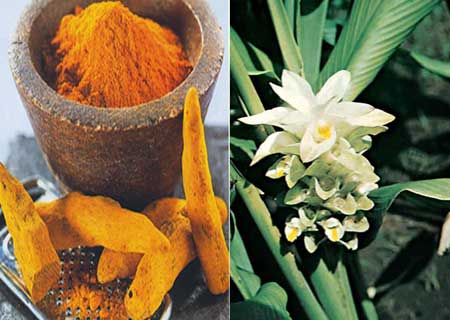Part III Natural antimicrobials – Turmeric Oil
Turmeric oil [INCI: Curcuma longa]

Turmeric root and plant
Turmeric oil is obtained by steam distillation or solvent extraction of the powdered rhizome of species of the genus Curcuma (family: Zingiberaceae). Of these species, Curcuma longa is the most well known. Curcuma longa yields 0.3-7.2% (usually 4-5%) of turmeric oil following steam distillation. The chief constituents of the essential oil are turmerone (60%) and related compounds, and zingiberene (25%).
In India and other ayurvedic healing modality cultures, turmeric has long been known for its cosmetic and wound healing properties. The essential oil has been used as a perfume component and studies have shown that it has antibacterial/antifungal, anti-inflammatory and insect-repellant properties, and is effective in the treatment of scabies.
References:
- P. S. Negi, G. K. Jayaprakasha, L. Jagan Mohan Rao, and K. K. Sakariah Central Food Technological Research Institute, Mysore 570 013, India
- J. Agric. Food Chem., 1999, 47 (10), pp 4297–4300 DOI: 10.1021/jf990308dPublication Date (Web): September 24, 1999 Copyright © 1999 American Chemical Society
- Antimicrobial activity of Curcuma zedoaria and Curcuma malabarica tubers
 doi:10.1016/j.jep.2005.02.004
doi:10.1016/j.jep.2005.02.004 - Antimicrobial properties of some herb essential oils EV Packiyasothy, S Kyle – Food Australia, 2002 – cat.inist.fr